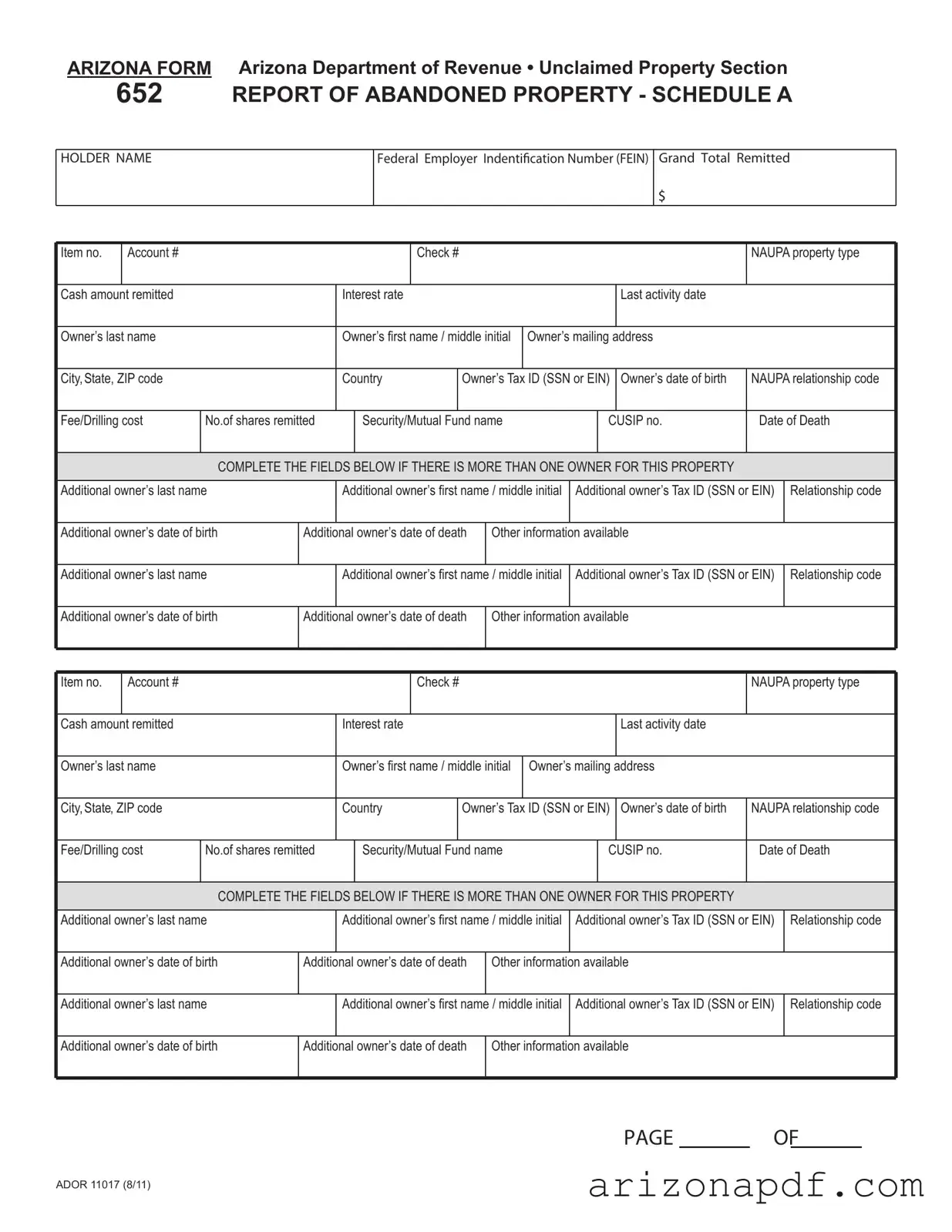The Arizona 652 form, known for its role in reporting abandoned property, shares similarities with the Uniform Unclaimed Property Act (UUPA) Holder Report Form. Like the Arizona 652, the UUPA form is utilized across various states for entities to report unclaimed properties. Both documents require detailed information about the holder, the property, and the owner, including names, addresses, and identification numbers. They play a crucial role in the process of returning lost or forgotten assets to rightful owners, ensuring compliance with state laws.
Another document similar to the Arizona 652 form is the IRS 1099 form. While the 1099 form is primarily for reporting income from various sources not involving wages, salaries, or tips, it parallels the Arizona 652 in its requirement for detailed financial and personal information. Both forms necessitate the provision of taxpayer identification numbers and personal details to ensure proper handling and reporting of financial data within the jurisdiction of tax and unclaimed property laws.
The SEC Schedule 13D is also akin to the Arizona 652 form in certain respects. This form is filed with the U.S. Securities and Exchange Commission by anyone who acquires more than 5% ownership of a publicly traded company. Similar to the Arizona 652, it requires detailed information about the owner, including personal information and the specifics of the ownership. Both documents serve to inform regulatory bodies and ensure transparency in financial and ownership transactions.
Furthermore, the FDIC Unclaimed Funds Form shares similarities with the Arizona 652. This form is used to claim funds from forgotten bank accounts insured by the Federal Deposit Insurance Corporation. Both the FDIC form and the Arizona 652 necessitate thorough details about the owner and the property, aiding in the rightful return of assets. They are vital tools for addressing issues related to unclaimed or abandoned funds.
The TreasuryDirect Form 1048, used for replacing or reissuing U.S. Savings Bonds, mirrors the Arizona 652 form in certain processes. It requires comprehensive information about the bond, the owner, and any co-owners, paralleling the detailed owner and asset information on the Arizona 652. These forms are instrumental in safeguarding assets and ensuring they are correctly attributed to their legal owners.
The SAFEKEEPING RECEIPT (SKR) is another document related to the Arizona 652 form. SKRs are used to prove the ownership and existence of valuable assets without physically transferring them. While serving a different primary purpose, both the SKR and Arizona 652 involve detailed recording of asset ownership, ensuring legal and rightful ownership is documented and recognized by relevant authorities.
Last, the Estate Tax Return (Form 706) shares a purposeful similarity with the Arizona 652 form in the aspect of reporting. Although Form 706 is specifically for reporting the estate of a decedent, it, like the Arizona 652, requires extensive documentation regarding the decedent's assets and their values. Both documents serve as vital links in the chain of asset transparency and legal compliance within their respective contexts.

